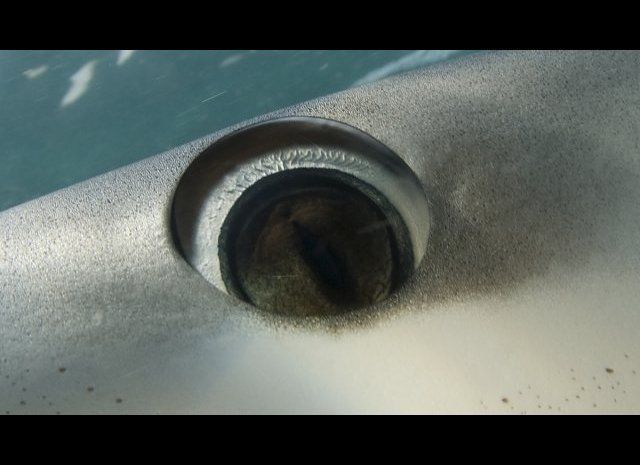By: Douglas Main, OurAmazingPlanet Staff Writer
Published: 03/25/2013 01:40 PM EDT on LiveScience
When a fisherman caught a bull shark recently off the Florida Keys, he came across an unlikely surprise: One of the shark's live fetuses had two heads.
The fisherman kept the odd specimen, and shared it with scientists, who described it in a study published online today (March 25) in the Journal of Fish Biology. It's one of the very few examples of a two-headed shark ever recorded — there about six instances in published reports — and the first time this has been seen in a bull shark, said Michael Wagner, a study co-author and researcher at Michigan State University.

The two-headed bull shark fetus. It's about 8 inches (20 centimeters) from head to head.
Technically called "axial bifurcation," the deformity is a result of the embryo beginning to split into two separate organisms, or twins, but doing so incompletely, Wagner told OurAmazingPlanet. It's a very rare mutation that occurs across different animals, including humans.
"Halfway through the process of forming twins, the embryo stops dividing," he said.
The two-headed fetus likely wouldn't have lived for very long in the wild, he said. "When you're a predator that needs to move fast to catch other fast-moving fish … that'd be nearly impossible with this mutation," he said. [See the two-headed shark.]
Wagner said the description of the deformed shark may someday help better understand how these deformities arise in sharks and other animals.
Two-headed snakes and turtles can be bought from certain specialty breeders, and there is a small market for such creatures, Wagner said.
Several of the few examples of two-headed sharks available today come from museum specimens from the late 1800s, when deformed animals and other macabre curiosities fetched high prices, he said.
Another reason the two-headed shark likely wouldn't have survived: its small body. "It had very developed heads, but a very stunted body," Wagner said. There's only so much energy that can go into the body's development, and it went into the shark's double noggins, he added.
Email Douglas Main or follow him @Douglas_Main. Follow us @OAPlanet, Facebook or Google+. Original article on LiveScience's OurAmazingPlanet
Copyright 2013 LiveScience, a TechMediaNetwork company. All rights reserved. This material may not be published, broadcast, rewritten or redistributed.
Support HuffPost
Our 2024 Coverage Needs You
Your Loyalty Means The World To Us
At HuffPost, we believe that everyone needs high-quality journalism, but we understand that not everyone can afford to pay for expensive news subscriptions. That is why we are committed to providing deeply reported, carefully fact-checked news that is freely accessible to everyone.
Whether you come to HuffPost for updates on the 2024 presidential race, hard-hitting investigations into critical issues facing our country today, or trending stories that make you laugh, we appreciate you. The truth is, news costs money to produce, and we are proud that we have never put our stories behind an expensive paywall.
Would you join us to help keep our stories free for all? Your contribution of as little as $2 will go a long way.
Can't afford to donate? Support HuffPost by creating a free account and log in while you read.
As Americans head to the polls in 2024, the very future of our country is at stake. At HuffPost, we believe that a free press is critical to creating well-informed voters. That's why our journalism is free for everyone, even though other newsrooms retreat behind expensive paywalls.
Our journalists will continue to cover the twists and turns during this historic presidential election. With your help, we'll bring you hard-hitting investigations, well-researched analysis and timely takes you can't find elsewhere. Reporting in this current political climate is a responsibility we do not take lightly, and we thank you for your support.
Contribute as little as $2 to keep our news free for all.
Can't afford to donate? Support HuffPost by creating a free account and log in while you read.
Dear HuffPost Reader
Thank you for your past contribution to HuffPost. We are sincerely grateful for readers like you who help us ensure that we can keep our journalism free for everyone.
The stakes are high this year, and our 2024 coverage could use continued support. Would you consider becoming a regular HuffPost contributor?
Dear HuffPost Reader
Thank you for your past contribution to HuffPost. We are sincerely grateful for readers like you who help us ensure that we can keep our journalism free for everyone.
The stakes are high this year, and our 2024 coverage could use continued support. If circumstances have changed since you last contributed, we hope you’ll consider contributing to HuffPost once more.
Already contributed? Log in to hide these messages.

